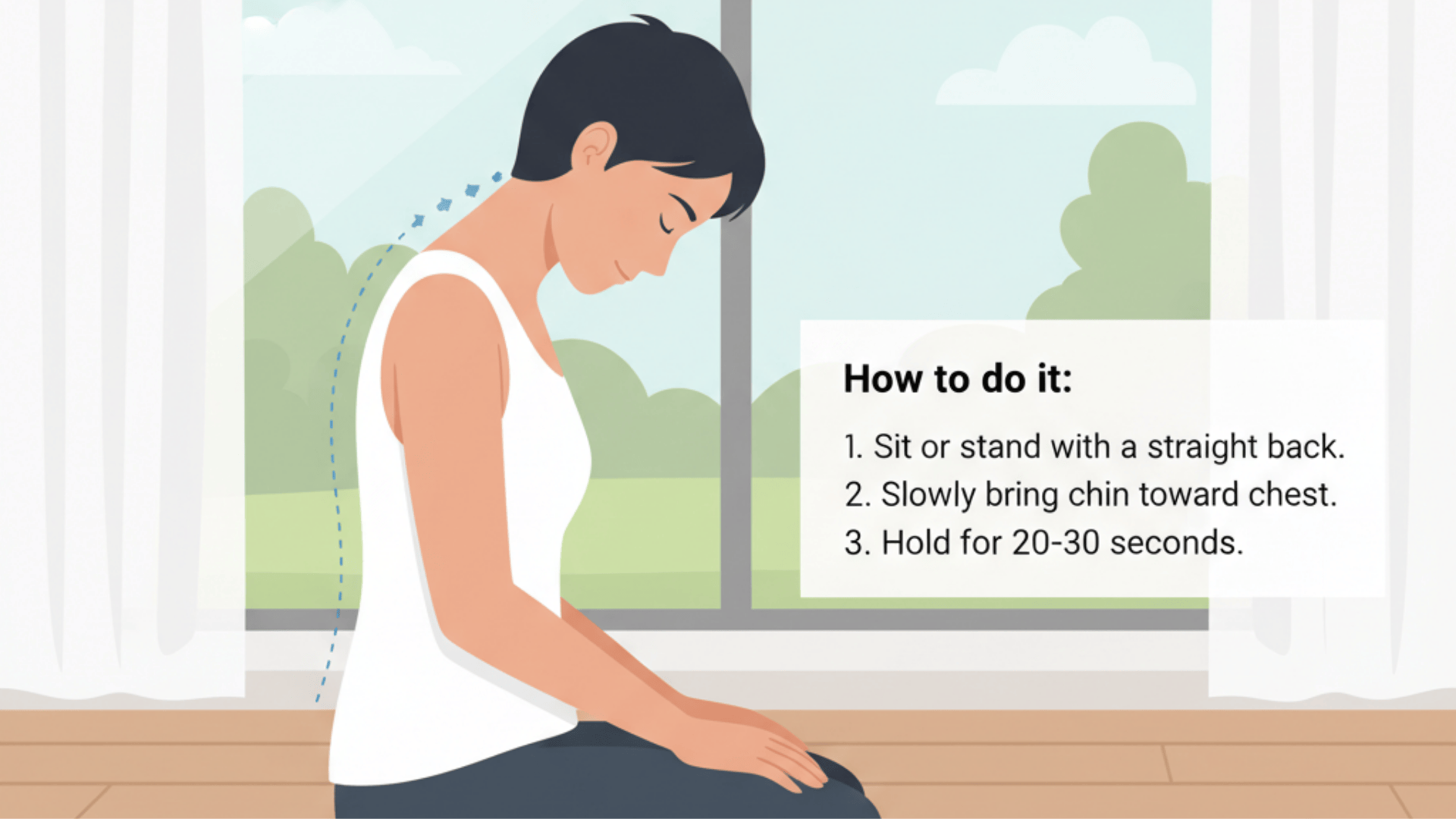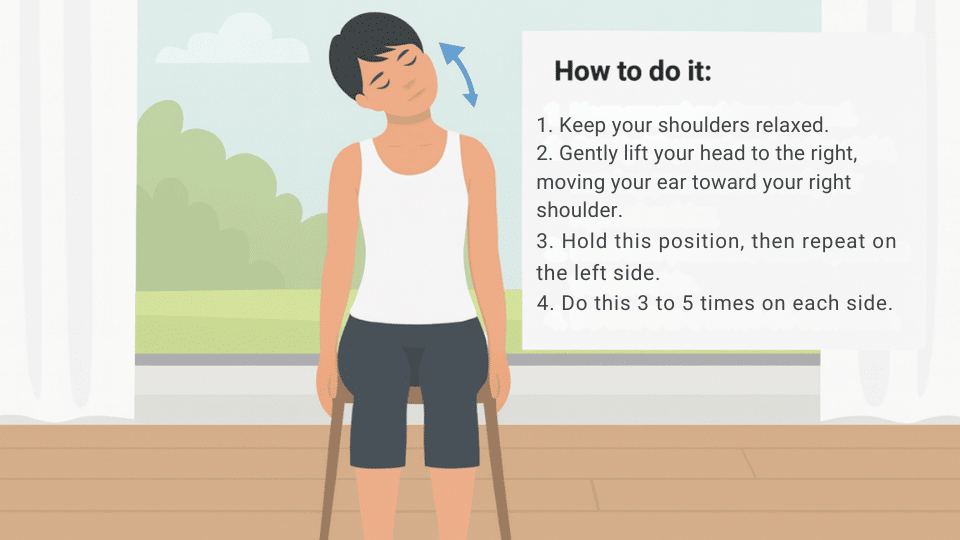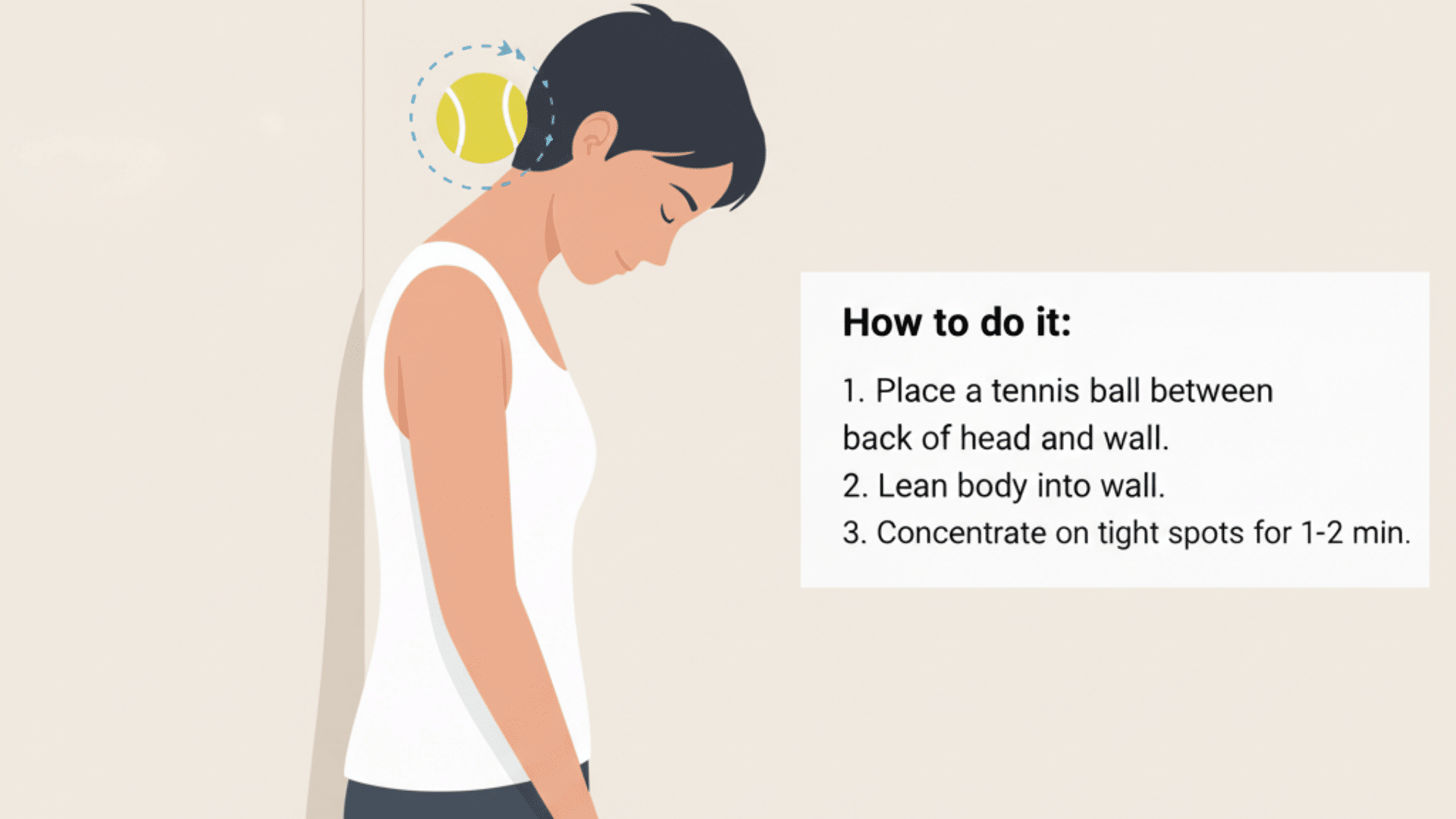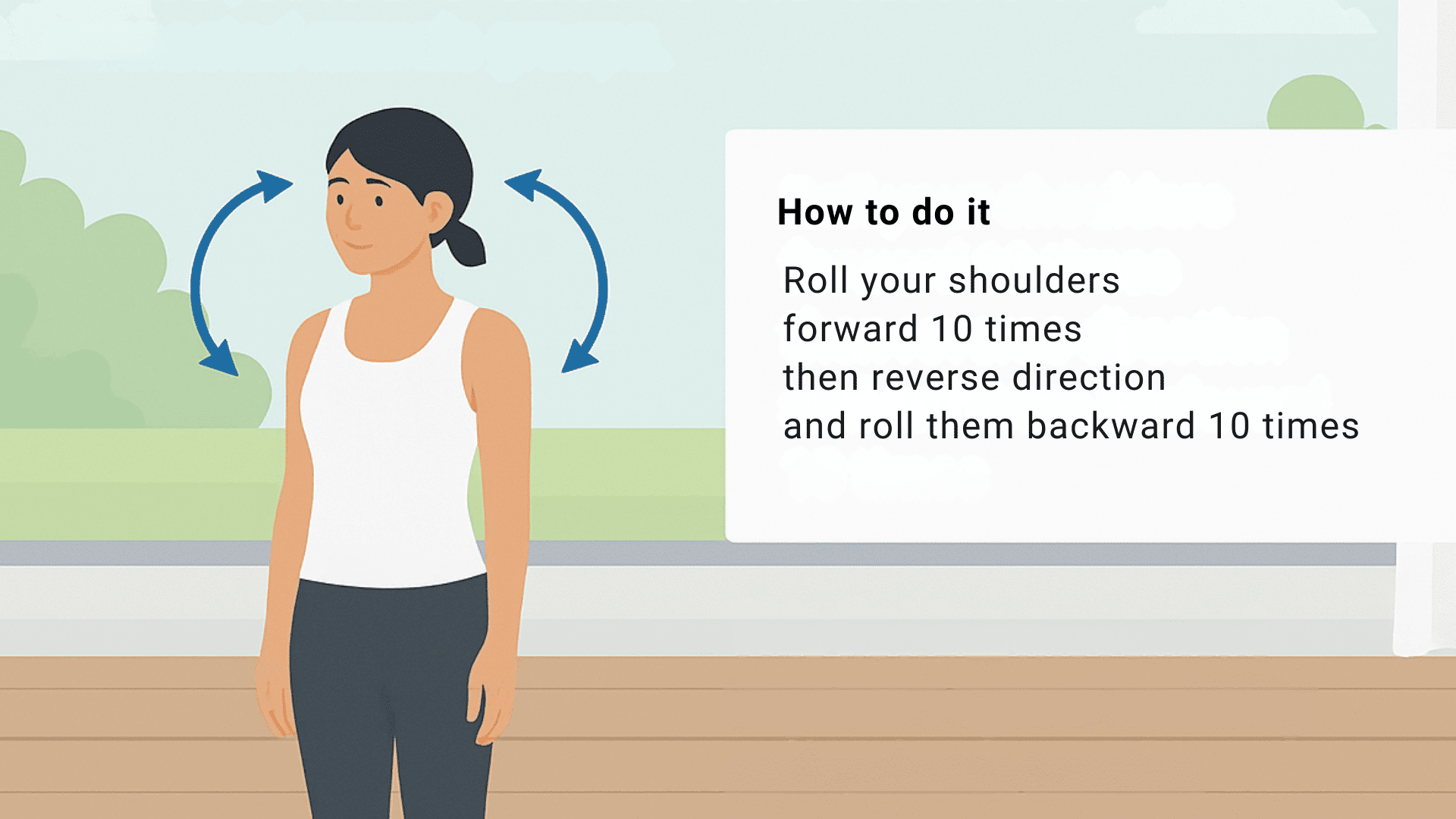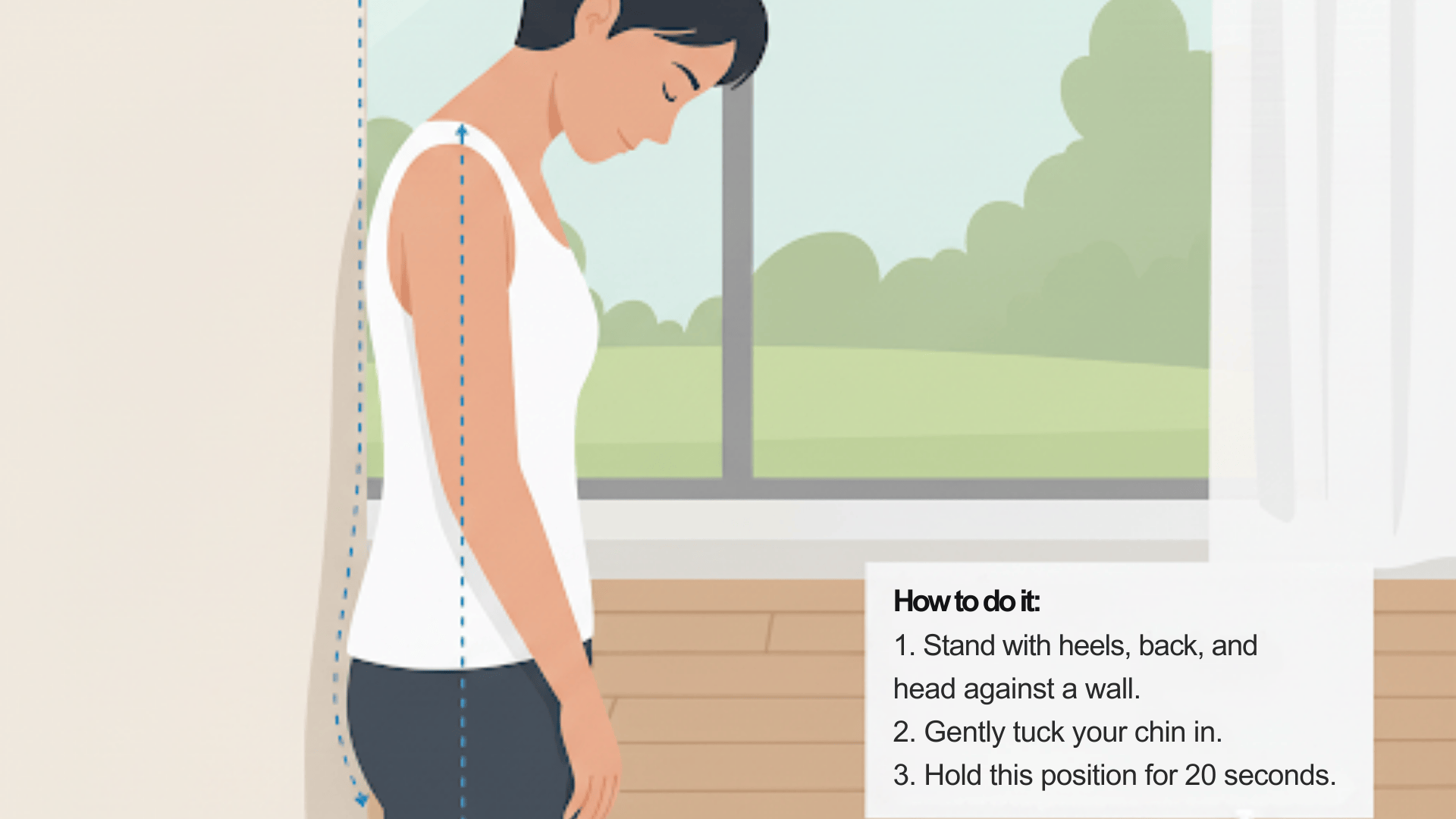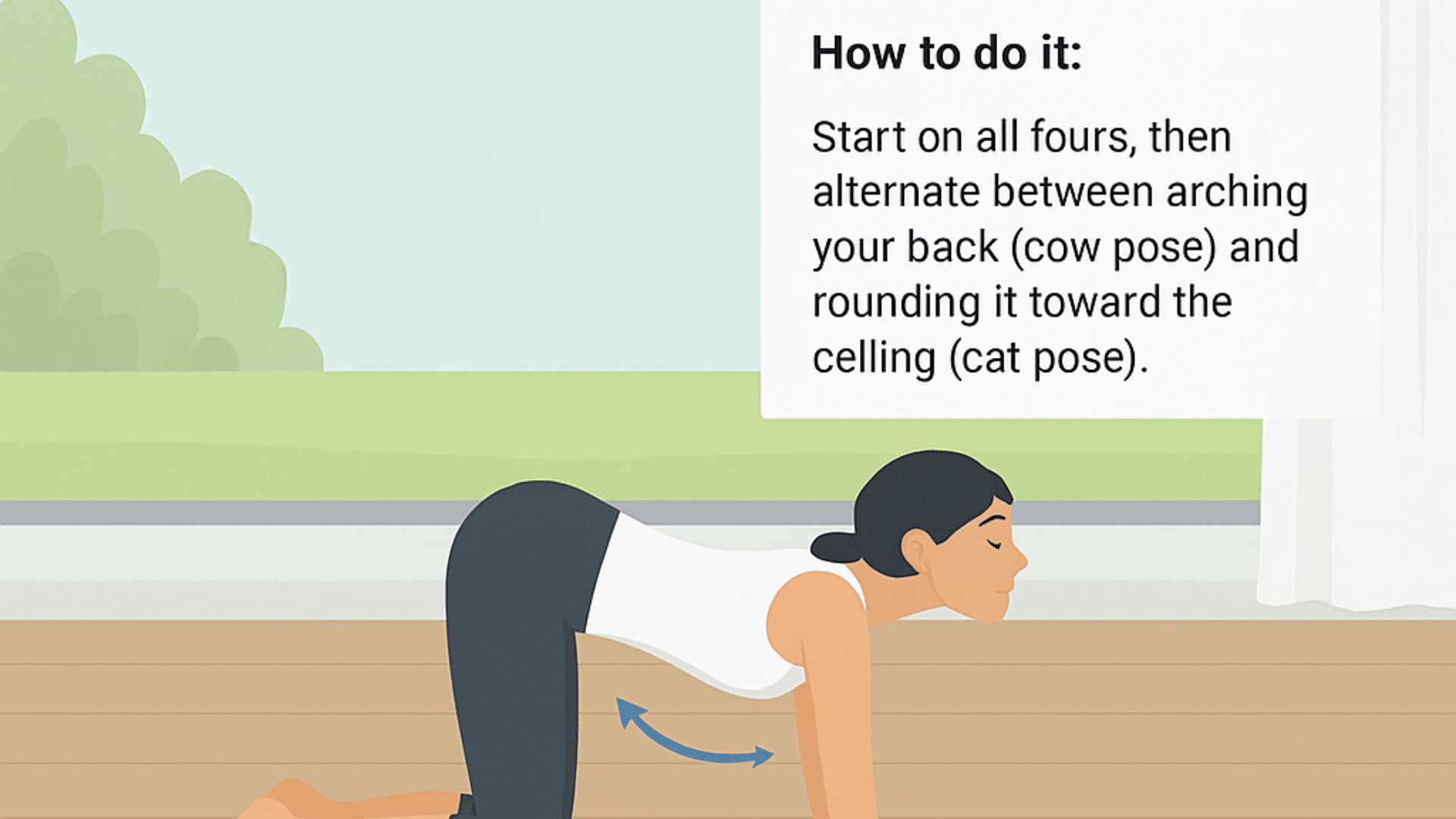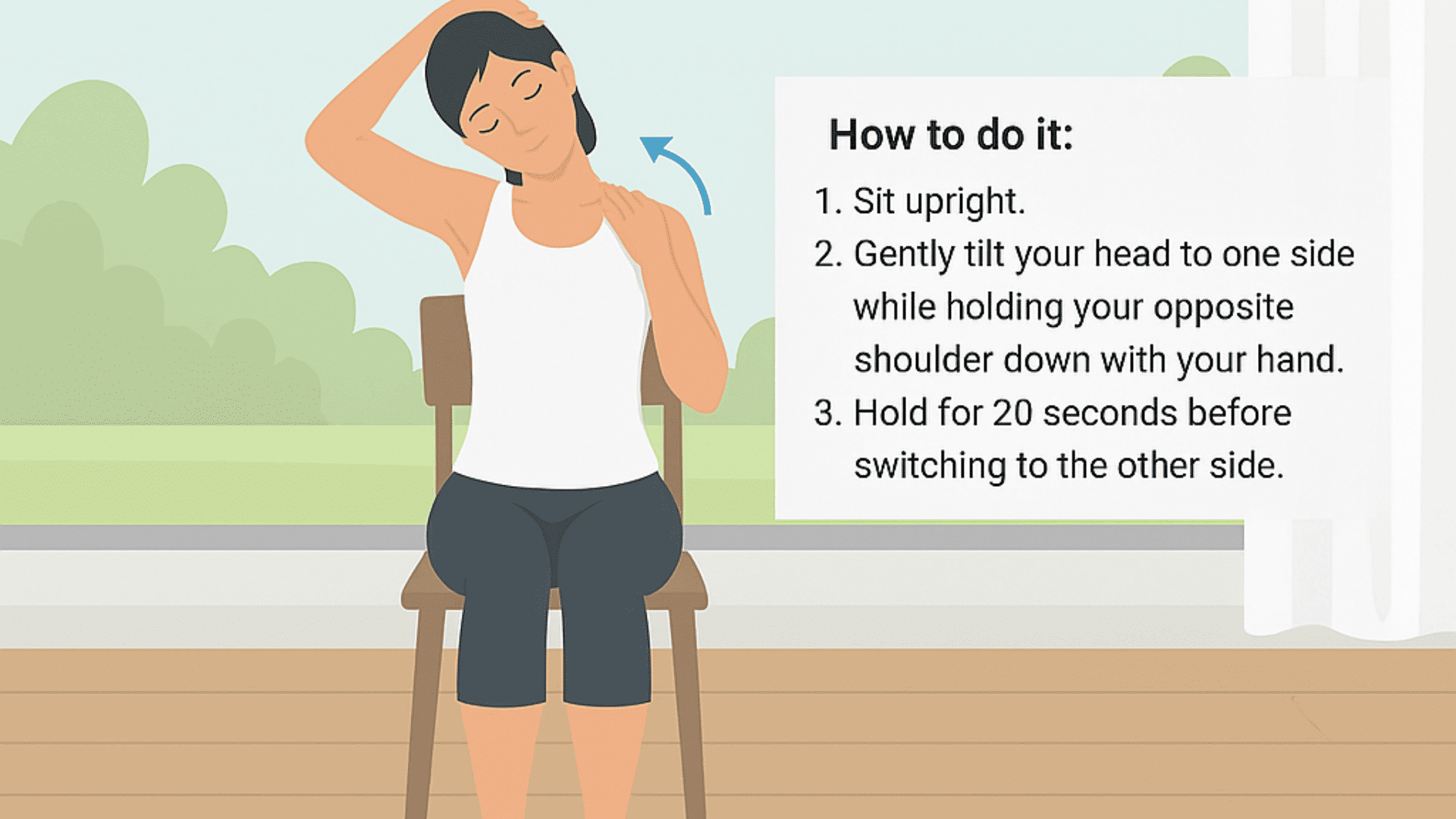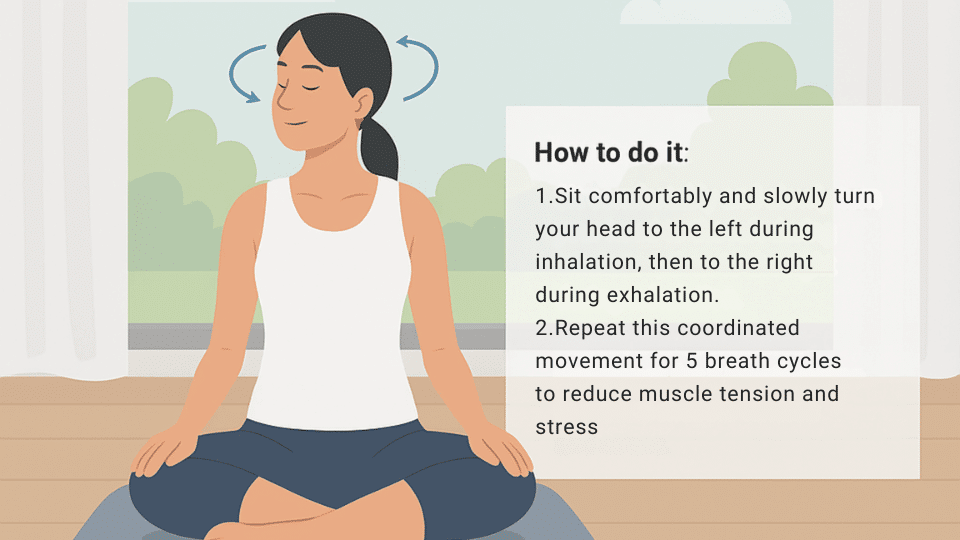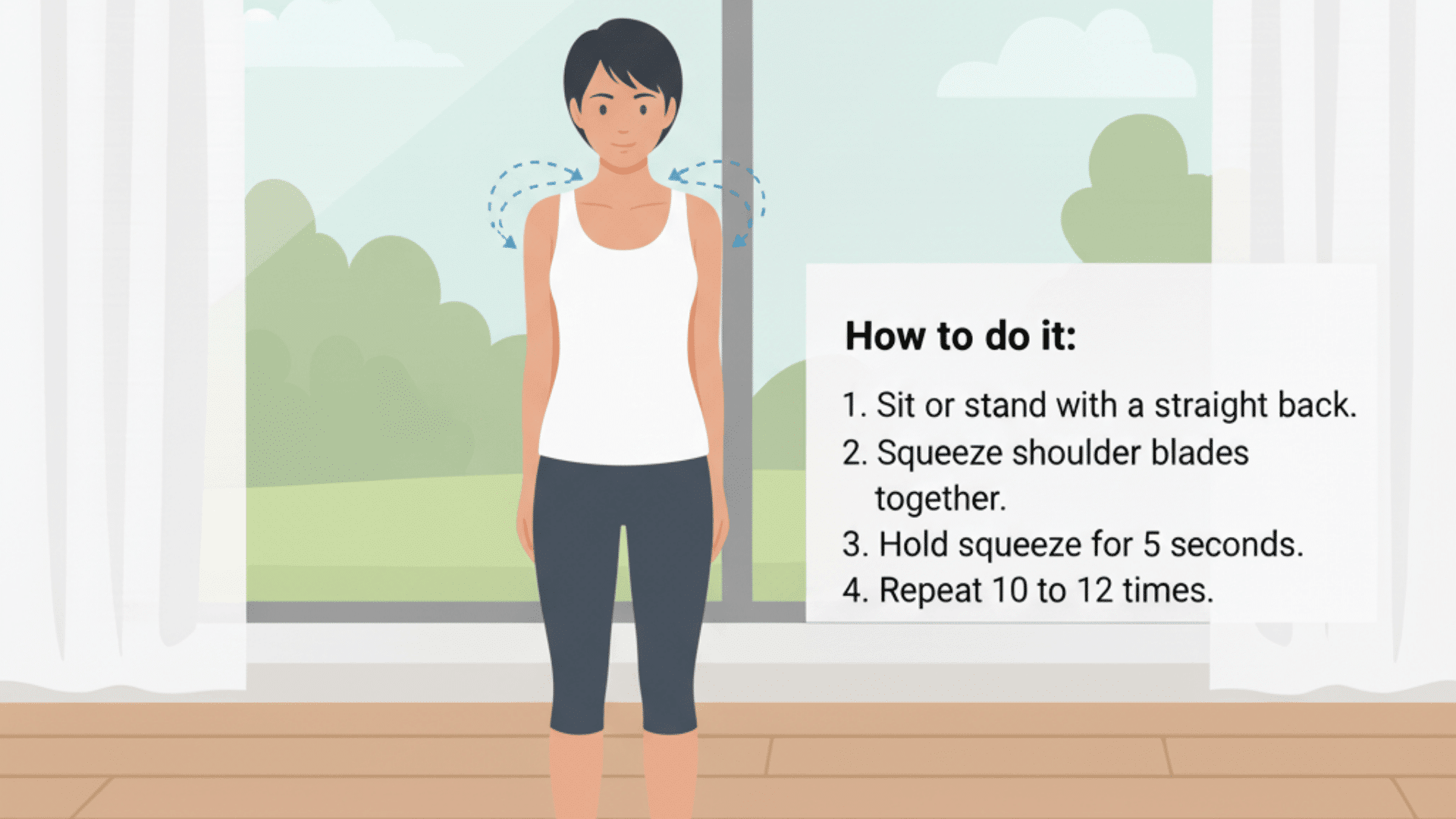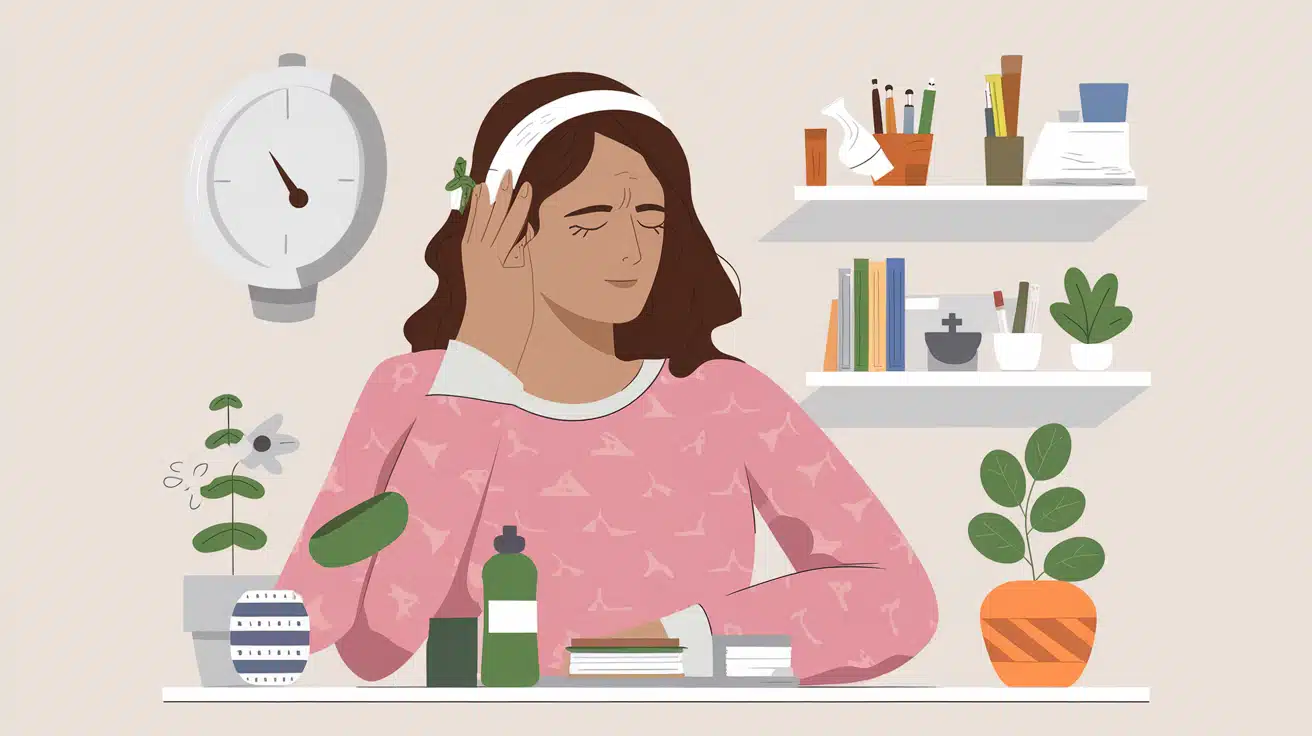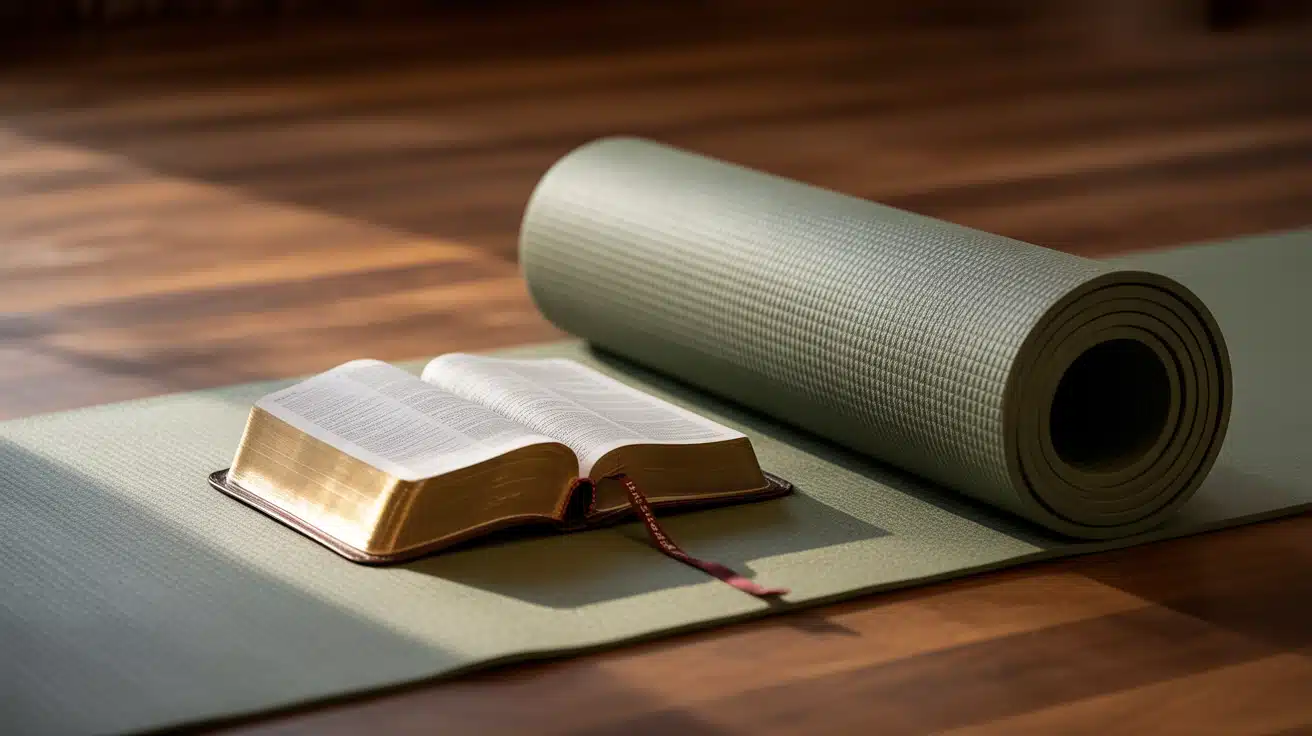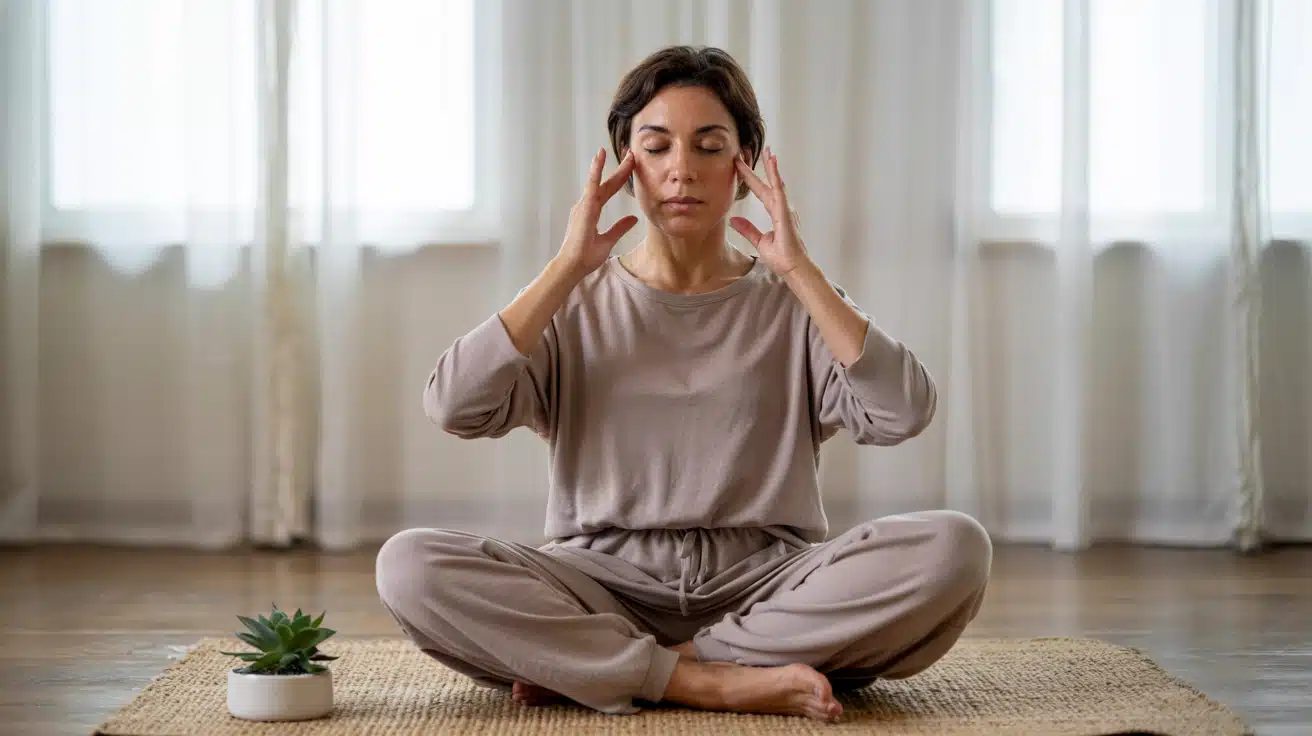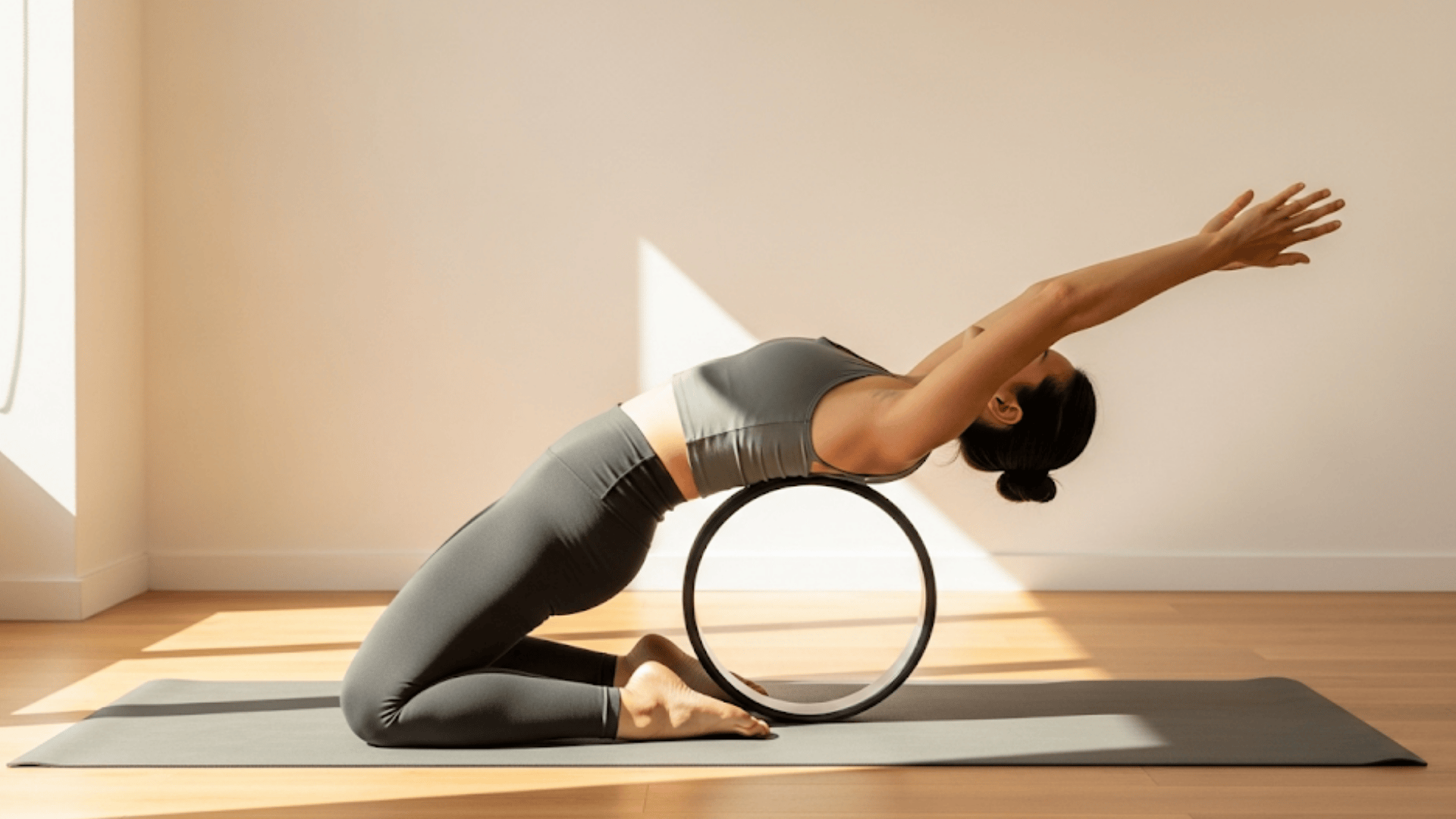When you’re dealing with occipital neuralgia, the pain can be a major challenge in your daily life.
Occipital Neuralgia is a specific kind of nerve pain that feels like a sharp, throbbing headache starting at the base of your skull and moving up your scalp.
While it’s different from a regular headache or migraine, the good news is that you have options for managing it.
Simple, consistent movements and changes to your routine can help ease the pressure on your nerves and relax tight muscles.
In this guide, we’ll explore the causes of occipital neuralgia and present a list of helpful exercises.
You will also learn how to integrate these movements with simple at-home practices for improved, long-term comfort.
Also read:How to Fix a Crick in Your Neck Fast?
What Causes Occipital Neuralgia?
Occipital neuralgia is a type of pain that originates in the nerves at the base of the skull and spreads through the scalp.
People often describe it as a sharp, shooting, or throbbing headache that differs from migraines or tension headaches.
The condition is caused when the occipital nerves at the back of the head are irritated, compressed, or inflamed.
Common causes of occipital neuralgia include:
- Tight muscles in the upper neck: These can squeeze the nerves.
- Poor posture: Slouching at a desk or looking down at screens can put pressure on the nerves
- Neck or spinal injuries: Conditions like whiplash can lead to this issue.
- Chronic stress: This can cause ongoing muscle tension.
- Underlying medical conditions, such as arthritis, diabetes, or cervical disc problems, may also be a factor.
Precautions Before Starting Exercises
Before you begin, keep these safety tips in mind to prevent strain and ensure a safe, effective routine.
| Precaution | Why It Matters |
|---|---|
| Avoid jerky or forceful movements | Sudden motions can strain neck muscles and worsen nerve irritation. |
| Stop if pain increases sharply | Sharp pain signals nerve irritation or injury; if it continues, it may cause further damage. |
| Always begin with gentle stretches | Prepares muscles and nerves for movement, reducing the risk of flare-ups. |
| Consult a healthcare provider if needed | Persistent or worsening symptoms may require medical evaluation and treatment. |
9 Best Exercises for Occipital Neuralgia Relief
Find 9 simple, effective exercises to relieve occipital neuralgia pain, improve posture, and ease headaches naturally at home.
1. Chin-to-Chest Stretch
This gentle stretch targets the muscles at the back of your neck that may be putting pressure on your nerves.
Sit or stand with proper alignment, then slowly lower your chin toward your chest until you feel a comfortable stretch.
Hold this position for 20 to 30 seconds to help release tension and tightness in the neck muscles.
2. Side-to-Side Neck Tilt
This movement improves flexibility and mobility in your neck muscles while relieving stiffness.
Keep your shoulders relaxed and gently tilt your head to one side, bringing your ear toward your shoulder. Hold the position, then repeat on the opposite side.
Perform 3 to 5 repetitions on each side for optimal results.
3. Occipital Self-Massage (Tennis Ball Release)
Using a tennis ball for self-massage can effectively release muscle tightness at the base of your skull. Place the tennis ball between your head and a wall, then lean into it to apply pressure.
Roll the ball around slowly, focusing on particularly tight spots for 1 to 2 minutes to help ease nerve pressure.
4. Shoulder Rolls
Tension in your shoulders and upper back often contributes to neck pain and nerve irritation. Perform smooth, circular shoulder rolls to loosen these connected muscle groups.
Roll your shoulders forward 10 times, then reverse direction and roll them backward 10 times to promote better circulation and flexibility.
5. Wall Posture Alignment
Poor posture can increase stress on your occipital nerves, making this alignment exercise crucial for relief. Stand against a wall with your heels, back, and head touching the surface.
Gently tuck your chin and hold this proper position for 20 seconds to retrain your postural awareness and reduce nerve compression.
6. Cat-Cow Stretch (Yoga)
This yoga movement benefits your entire spine, including the cervical region where occipital nerves originate.
Start on all fours, then alternate between arching your back (cow pose) and rounding it toward the ceiling (cat pose).
This flowing movement improves spinal flexibility and reduces tension throughout your back and neck.
7. Upper Trapezius Stretch
The trapezius muscles connect your neck to your shoulders, and tightness in this area can exacerbate nerve pain.
Sit upright and gently tilt your head to one side, using your opposite hand to hold your shoulder down.
Hold for 20 seconds before switching sides to release muscle tension that may be affecting nerve function.
8. Deep Breathing with Neck Mobility
Combining controlled breathing with gentle neck movements promotes both physical and mental relaxation.
Sit comfortably and slowly turn your head to the left during inhalation, then to the right during exhalation. Repeat this coordinated movement for 5 breath cycles to reduce muscle tension and stress.
9. Scapular Squeeze (Shoulder Blade Pinch)
Strengthening the muscles that support good posture can prevent future nerve irritation.
Sit or stand with proper alignment, then squeeze your shoulder blades together as if pinching something between them.
Hold the squeeze for 5 seconds before relaxing, and repeat 10 to 12 times to build postural strength and stability.
Simple Home Remedies & Daily Habits for Relief
Incorporate these easy at-home remedies and daily habits to naturally ease occipital neuralgia pain and support long-term relief.
1. Heat or Cold Therapy
Applying heat or cold can help manage pain and relax tight muscles. A warm compress or heating pad can increase blood flow to the area, while an ice pack can help reduce inflammation and numb the pain.
2. Ergonomic Workspace Setup
Adjusting your workspace can make a big difference in preventing nerve pressure. Ensure your monitor is positioned at eye level and use a supportive chair to maintain good posture throughout the day.
3. Supportive Pillow
Using a pillow that properly supports your head and neck while you sleep is crucial. This helps keep your spine in a neutral alignment, which can ease pressure on the occipital nerves and prevent morning discomfort.
4. Stress Management
Stress is a common cause of chronic muscle tension in the neck and shoulders. Practicing techniques such as yoga, meditation, or deep breathing can help reduce stress and, in turn, alleviate some of the physical tension that contributes to pain.
When to See a Doctor?
Even though home exercises can be helpful, it’s essential to seek medical attention if your symptoms persist or become severe.
Consult a healthcare provider if you experience intense or frequent headaches.It is also crucial to see a doctor if you have numbness, tingling, or changes in your vision.
Finally, if you have been consistently trying home care and see no improvement, it is a sign that you should seek professional medical advice.
Wrapping It Up
Occipital neuralgia can be a painful condition, but with the right approach, it’s something you can manage.
By regularly practicing these nine simple exercises, along with making a few adjustments to your daily life and posture, you can help reduce pressure on your nerves and naturally decrease flare-ups.
Start with just a few stretches each day and build them into your routine. These small, consistent efforts can lead to a significant improvement in your comfort and quality of life over time.
Ready to start feeling better? Begin with the exercises that seem easiest for you and see how much of a difference they can make. The key is to be consistent and listen to your body.


